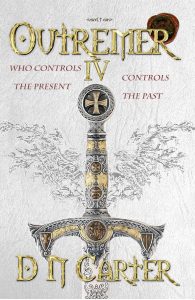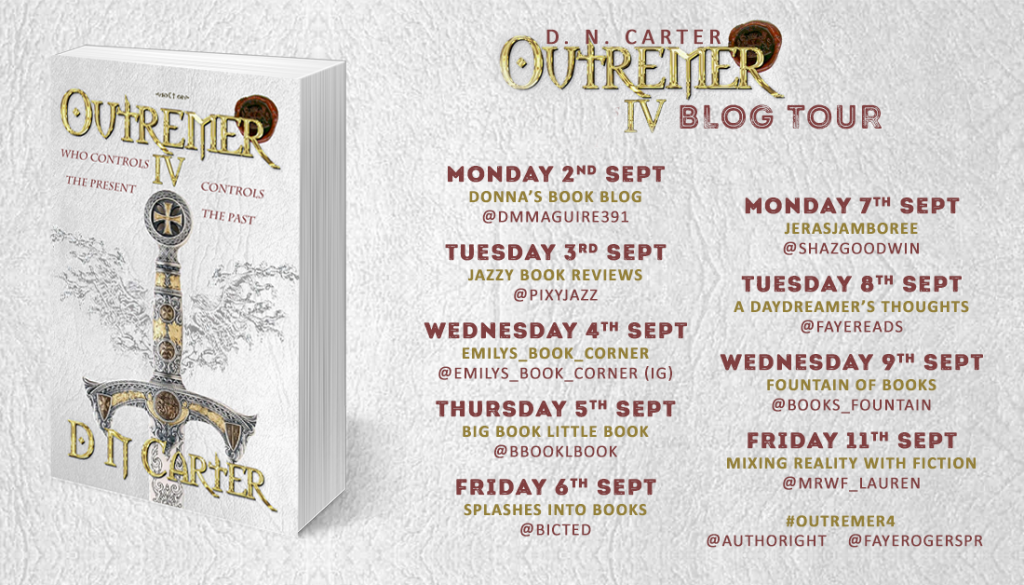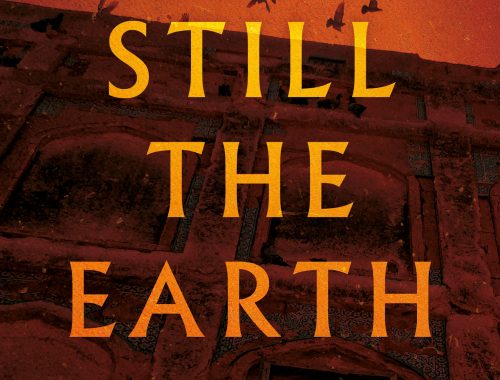Outremer IV
D. N. Carter

A great secret from antiquity is threatened; its eradication, if successful, will lead to mankind’s destruction. There can be no compromise in safeguarding it, whatever the fateful consequences to those entrusted with its continuation. Paul faces impossible choices, ones he cannot make alone. Who can he trust? How can he protect this secret as the world around him falls apart as Outremer descends into a deliberately orchestrated war of unparalleled violence, with Christianity and Islam pitted against one another? Amid the horrors of total war, Paul must decipher the secret, how it has been updated and encoded within the mysteries of Mary Magdalene and the sacred feminine, and how it must be restored if is to be preserved successfully so that mankind can claim its true inheritance, one of unimaginable power. Evil forces wish to control and destroy the secret to stop a new dawn of spiritual awakening, cultivating instead a climate of fear, anger, judgment and the eventual enslavement of our souls. Wiser, braver and nobler individuals step forwards, just as they have always done in the past to intercede against evil, and it is to those men and women Paul must turn. Just when all appears lost, Paul must find true courage, perseverance and faith, and make the ultimate sacrifice. Failure on his part will risk losing this arcane message forever. The time to act is now. Outremer IV is the final instalment of D. N. Carter’s epic historical quartet.
Top Five things about the main protagonist in Outremer

Paul Plantavalu.
He is the leading character within Outremer. Tall and handsome, fair haired with hazel eyes and of a quiet nature and disposition he was intellectually sharp, inquisitive and very much into the arts and architecture who placed honour, truth and justice above all things. He sought answers to what his real surname meant and why it was changed, Plantavalu not being his true identity. Paul fell deeply in love with Alisha al Komaty despite the many warnings he should not because she was from a Muslim family. Alisha was, in his mind, his world. His mother died giving birth to him but he learnt that his father was descended from Segisbert IV, son of Dagobert II and that all traces of their family were eradicated by the Roman Catholic Church. Paul was very much like his father Philip in both physical appearance and nature. Throughout Outremer being told, Pauls character is revealed as he grows from a young, somewhat naive and protected, some would say entitled and privileged upbringing, to manhood. It was not an easy path for an individual who sensed so much and felt things deeply…some would say too deeply at times to his own detriment.
1: He was a dreamer, in a very real sense, but learnt to use his vivid dreams that he would often experience to guide his designs, artwork and even actions in life. He became heavily influenced by several characters he came into contact with, three main ones in particular being Theodoric, Attar and Kratos. Kratos was a truly enigmatic and mysterious character who stood over seven feet tall. With blue eyes that appeared to have flecks of gold in them, similar to Alisha, he looked like a man in his early 60’s but with a full head of pure white hair and no flaws upon his white skin. No one had ever seen him ever look any different despite the passage of time. Living mainly in Malta, he was powerfully built and unbelievably strong and exuded confidence but also a genuine sense of warmth and kindness. He always carried a large staff and had knowledge beyond his time those who knew him would often claim; especially in the sciences and medicine. He would have a very deep and profound role to play in Paul’s life. Attar of Nishapur was a Persian Sufi Mystic famed for his poems. Abū Ḥamīd bin Abū Bakr Ibrāhīm, better known by his pen-names Farīd ud-Dīn and ʿAṭṭār which means apothecary. He was a poet, theoretician of Sufism, and hagiographer who had an immense and lasting influence on Persian poetry and Sufism. Manṭiq-uṭ-Ṭayr (The Conference of the Birds) and Ilāhī-Nāma are among his most famous works. Attar was the son of a wealthy chemist, receiving an excellent education in various fields. He initially practiced the profession of pharmacy and personally attended to a very large number of customers. The people he helped often confided their troubles in him which affected him deeply. Paul likewise was constantly affected by the people he helped and came into contact with…something he had to learn to manage carefully to keep his own sanity. Attar eventually, abandoned his pharmacy store and travelled widely to Baghdad, Basra, Kufa, Mecca, Medina, Damascus, Khwarizm, Turkistan, and India, meeting with Sufi Shaykhs and returned promoting Sufi ideas. He had a major influence on Paul’s studies and guided him wisely. He helped Paul learn how to interpret his dreams but also his growing insightful and spiritual abilities and how to trust his instincts. Then there was Theodoric. In his late sixties he was a wise esoteric maverick recluse who helped Paul to learn, but more importantly understand esoteric and exoteric codes. He also taught him martial skills of close combat. With a great sense of humour he wore an old habit and was rather pale looking and his weight often fluctuated between being thin to rather rotund, not fat as he would often argue…but always hungry. He was incredibly wise and insightful and imparted much of his knowledge and wisdom gained over several decades from many schools including Sufi mysticism and secrets of the Magi to Paul. He was a former knight with a mysterious past he kept close to his chest but Paul instinctively trusted him. Theodoric’s black sense of humour always came to the fore when he was in dire trouble with many funny comments and observations being made by him. Always calm and utterly unflappable he was an acknowledged great illusionist.
2: Paul was an accomplished artist being able to execute incredibly lifelike drawings of people and places. He drew many people in his time including some of the most famous names of the period from Saladin, King Guy de Lusignan, to Queen Sibylla of Jerusalem, Princess Stephanie and the infamous Reynald de Chatillon. He was even able to draw the enigmatic leader of the Ashashin, Al Rashid, the Old man of the Mountains himself. Paul felt that drawing people closely brought him a deeper sense and understanding of the person. But drawing in such fine detail and accuracy alarmed some people but also led to some very dire consequences later in his life as Outremer reveals.
3: Paul was fundamentally a very sensitive, kind and gentle soul…and consequently as a deep thinker his nature was at times often at odds to the scheming and violent world he found himself in. But it was Alisha who would galvanise his spirit to stand up and fight, to use extreme violence to protect his family and protect others in need when necessary; but this caused him a great personal inner conflict that he found hard to reconcile with the person he thought he was and his beliefs. As Outremer progresses Paul questioned everything he had ever known about Judaism, Christianity and Islam.
4: Having a genuine empathy for others he was naturally both loyal and courageous. Paul considered himself spiritual, not necessarily religious as he saw the two as being two totally different things. Totally believed in, and felt that all life was sacred and that humankind is inherently kind first and foremost and that love is the key to spiritually evolve. He felt that all of us are connected by the very nature of our eternal souls whether others believed in it or not.
5: Service to others before service to self was his overriding character trait. He was prepared to give up everything and sacrifice all that he loved and held dear for the long term benefit of humankind, especially when he considered with utter conviction from the things he had seen and learnt, that the information he was guarding for future generations and the planet we live upon itself, was ultimately for the very survival and advancement of our souls themselves…to guarantee we evolve. This is why he wrote down the codes of antiquity for future generations to rediscover when we again would recognise them for what they are. That generation and that time is now!

Publication Date: September 2019
Format: Paperback
Pages: 582
Genre: Historical Fiction
Reviewer: Faye
Source: Review Copy


